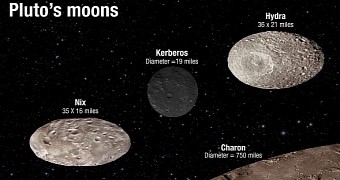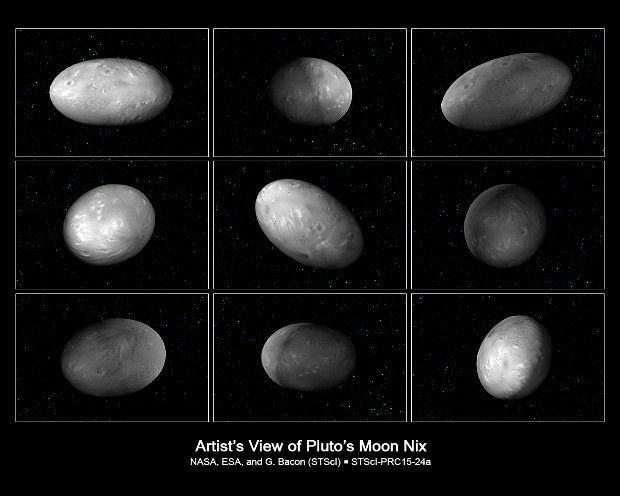Having spent quite a while stalking Pluto's moons Nix and Hydra and keeping tabs on their movements through the sky, the Hubble Space Telescope produced data showing that these two orbs wobble in an unpredictable fashion in their orbits.
The moons move in such strange and logic-defying ways that astronomers are now cracking jokes about how, were somebody to live on either of them, they would wake up at another hour every day.
“If you lived on Pluto's moons Nix or Hydra, you'd have a hard time setting your alarm clock. That's because you could not know for sure when, or even in which direction, the sun would rise,” they say.
So, what's up with these wobbly moons?
In a study appearing in today's issue of the journal Nature, researchers explain that, according to data delivered by the Hubble Space Telescope and other scientific instruments, Nix and Hydra wobble unpredictably because of the gravitational pulls of Pluto and Charon.
Thus, scientists say that, because of how they are positioned, Pluto and Charon forever interact and give birth to a shifting gravitational field. In turn, this gravitational field pushes and pulls at Nix and Hydra, influencing their movements. “The variable gravitational field induces torques that send the smaller moons tumbling in unpredictable ways,” explain study leaders Mark Showalter of the SETI Institute in Mountain View, California, and Doug Hamilton of the University of Maryland at College Park.
Were Nix and Hydra to have a more spherical shape, they might not have been as vulnerable to the dynamic gravitational field produced by Pluto and Charon. Being shaped like a football, however, they can't really hold their balance and so jiggle uncontrollably.
The moons now orbiting Pluto, i.e. Charon, Nix, Hydra, Kerberos and Styx are believed to have formed when the celestial body collided with an orb about the same size.
NASA's New Horizons probe will soon visit the system
In January 2006, NASA's New Horizons probe launched from the Cape Canaveral space station in Florida, US. This coming July, on the 14th day of the month, the craft is expected to reach the Pluto system and complete a flyby of it.
At its closest approach, the New Horizons spacecraft will be just 7,700 miles (12,400 kilometers) away from the dwarf planet. NASA scientists say that, during this flyby, the probe will image the Pluto system in unprecedented detail.

 14 DAY TRIAL //
14 DAY TRIAL // 

